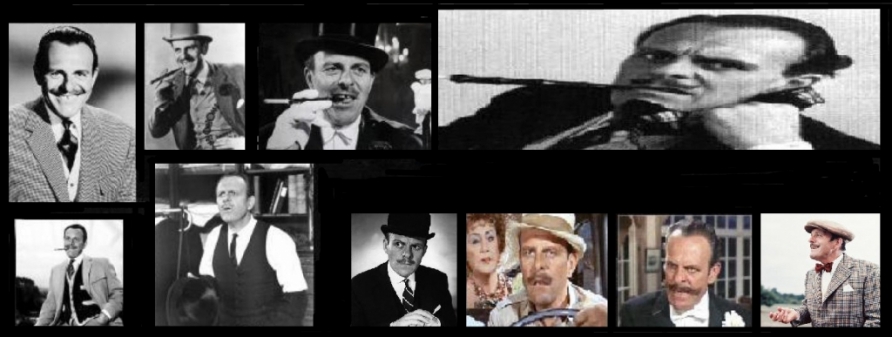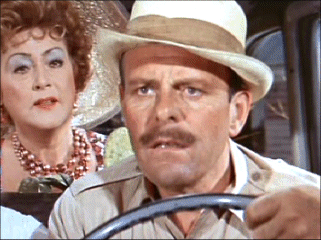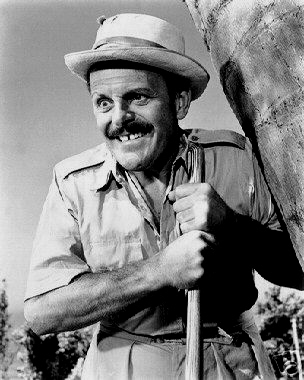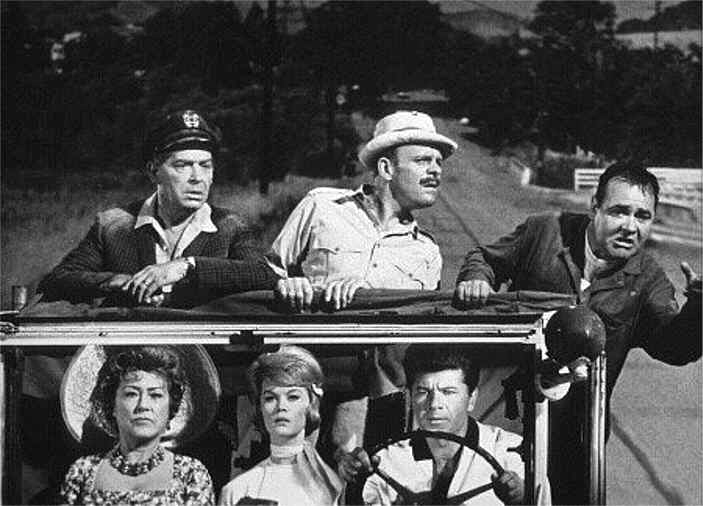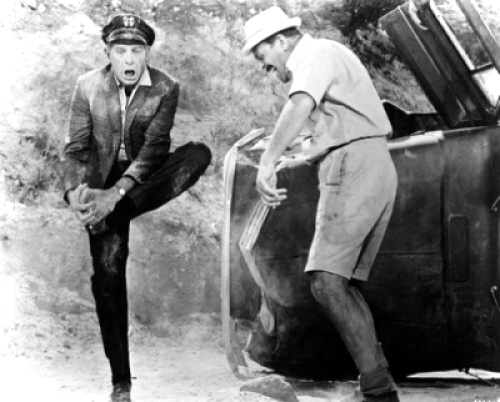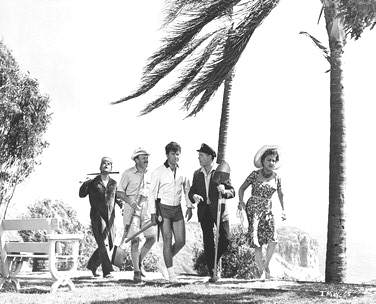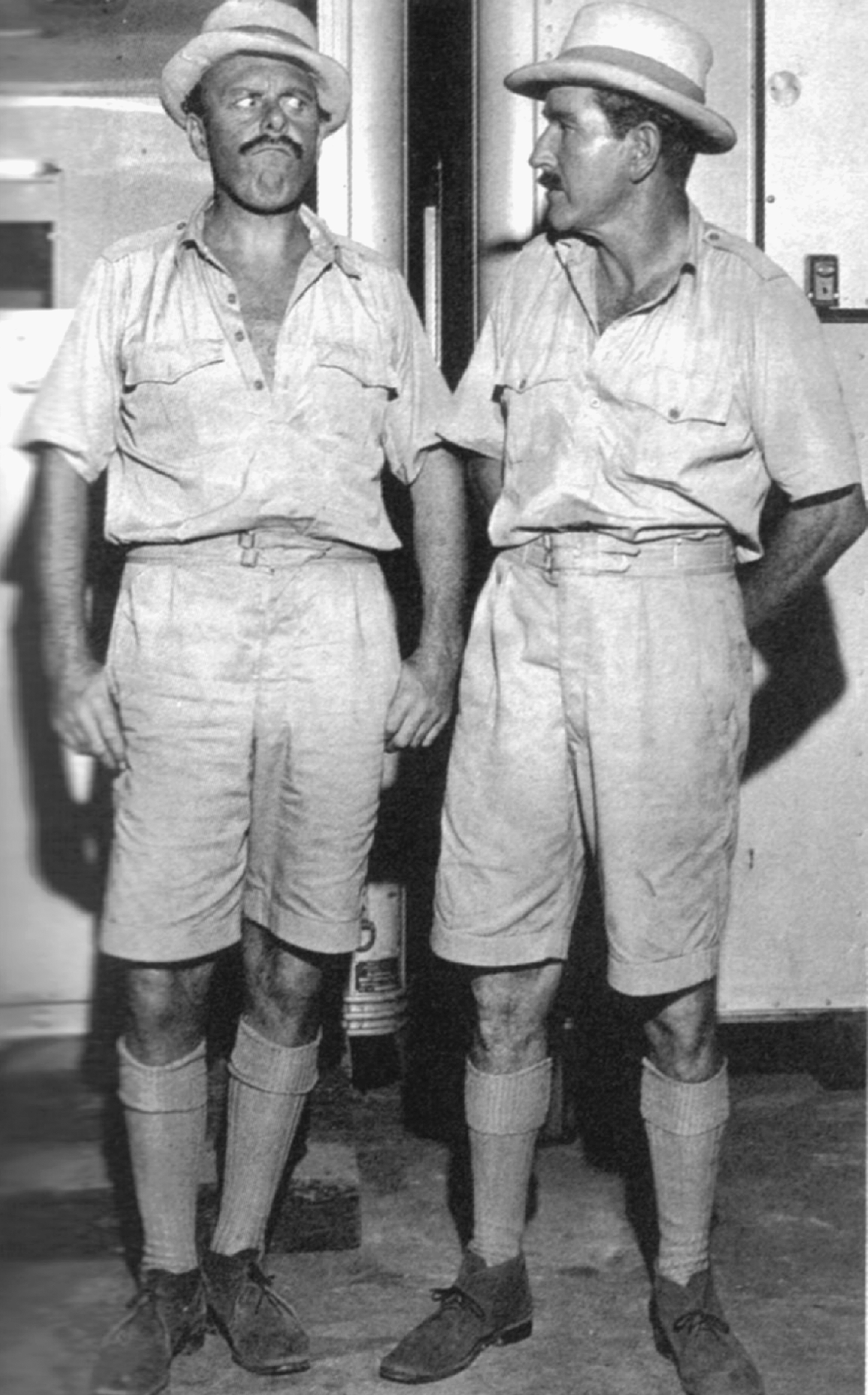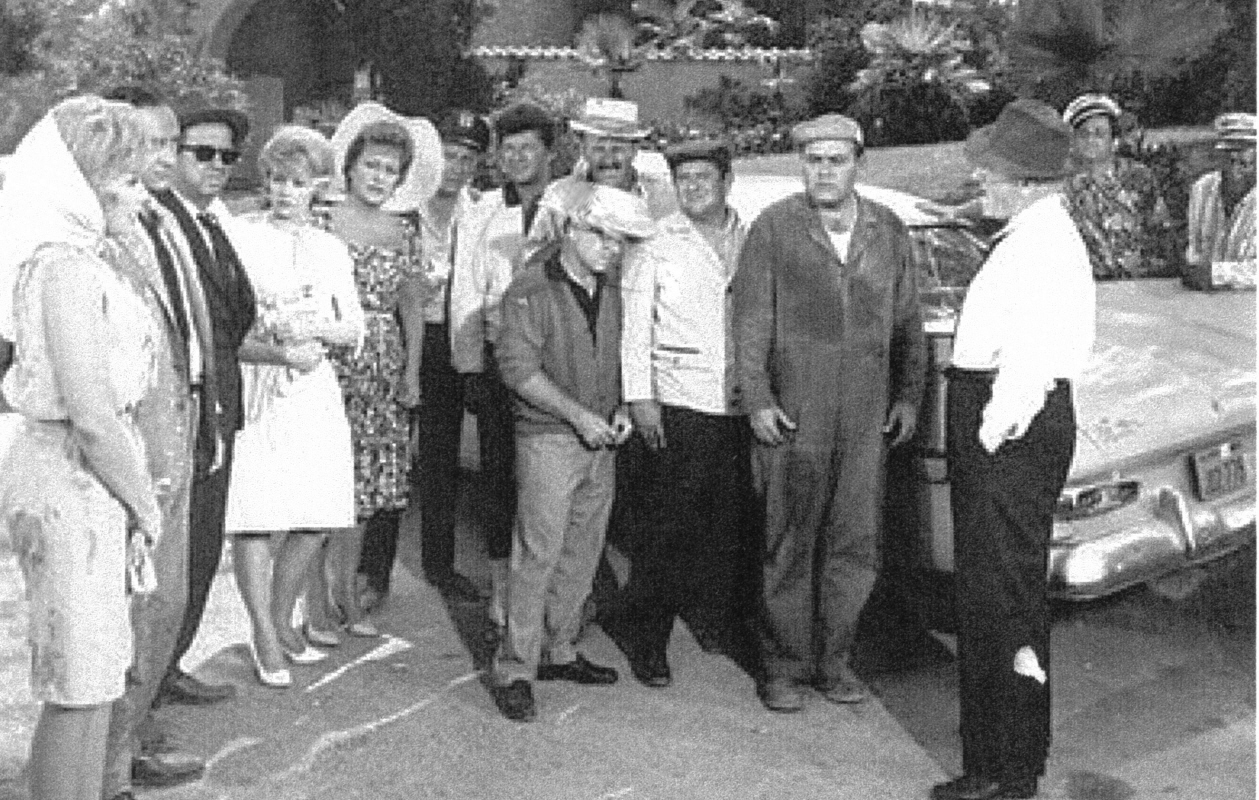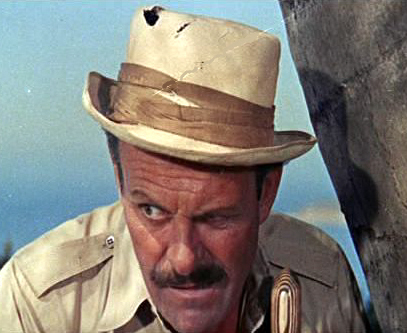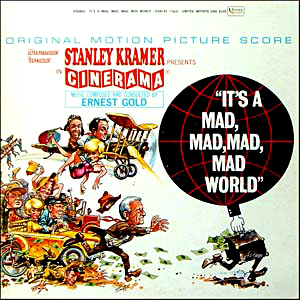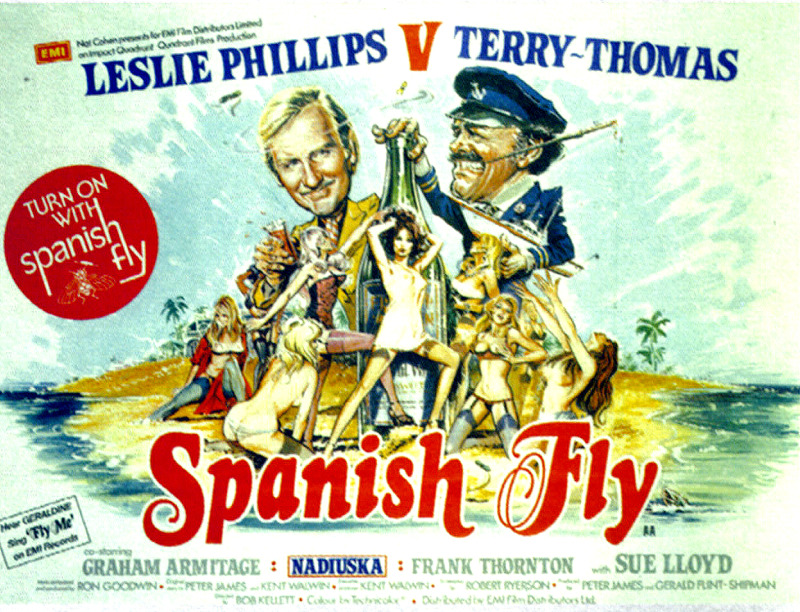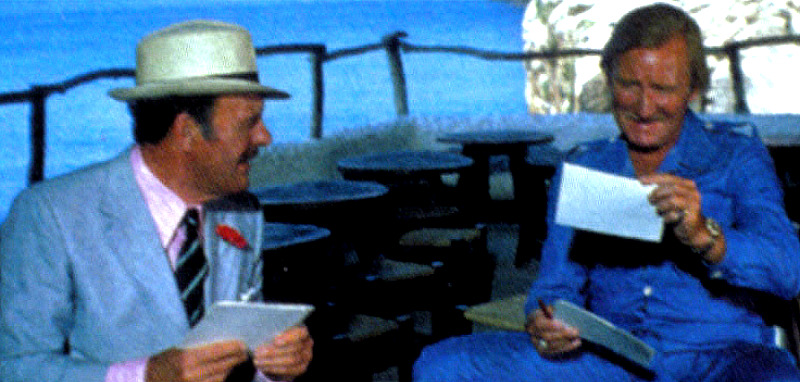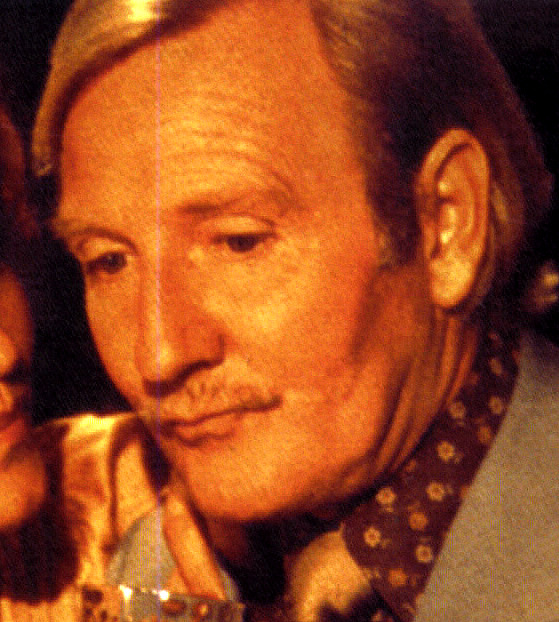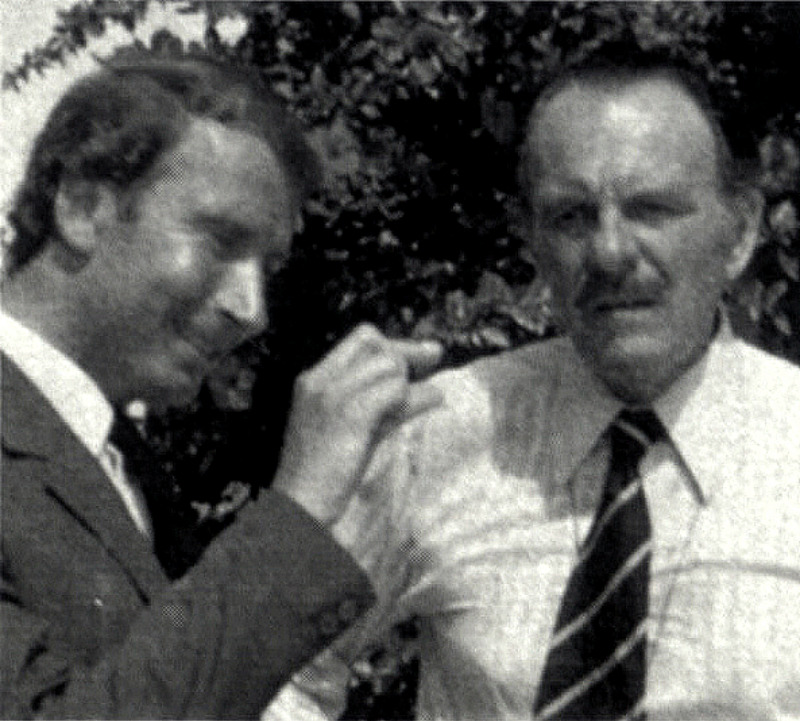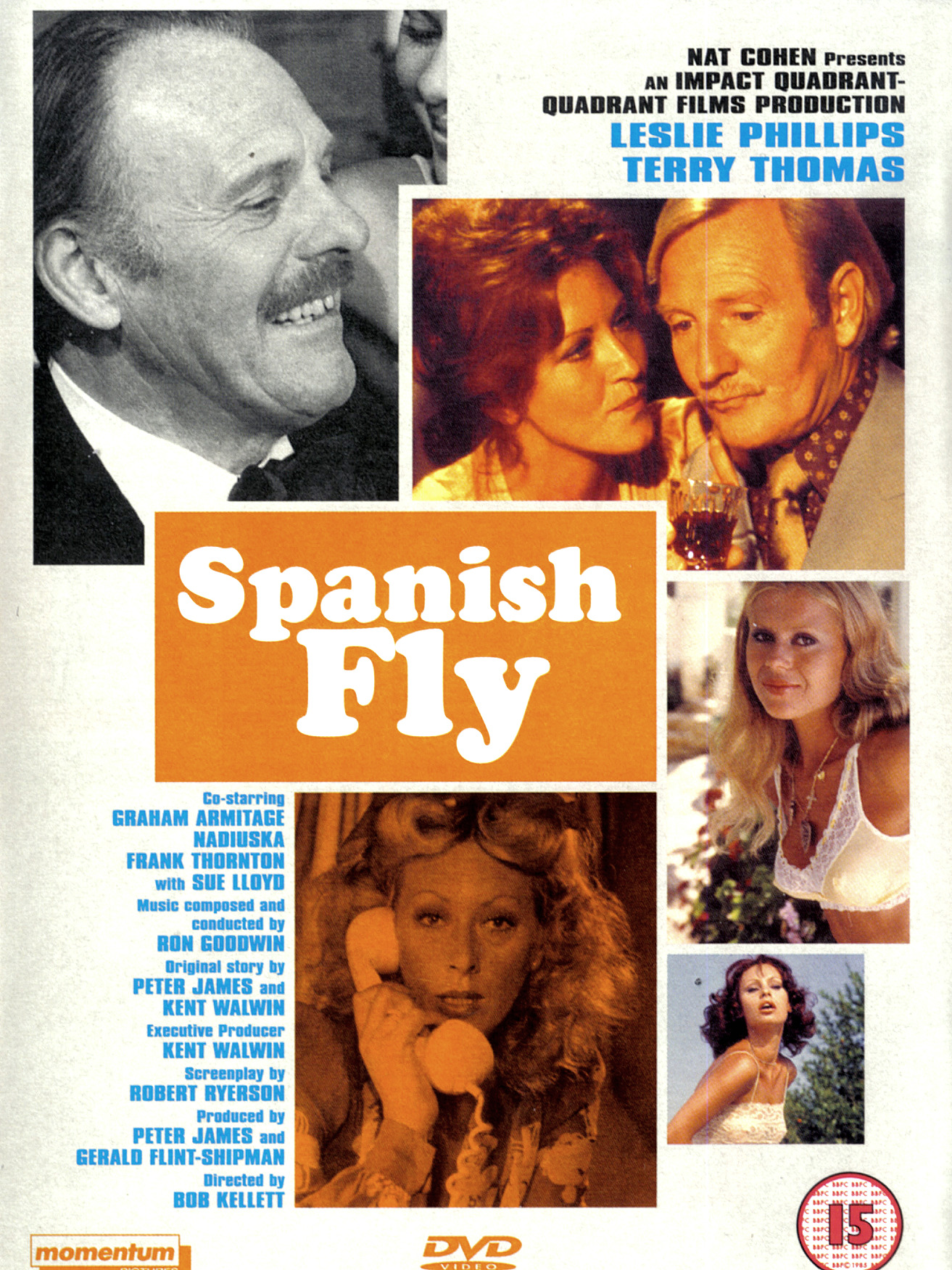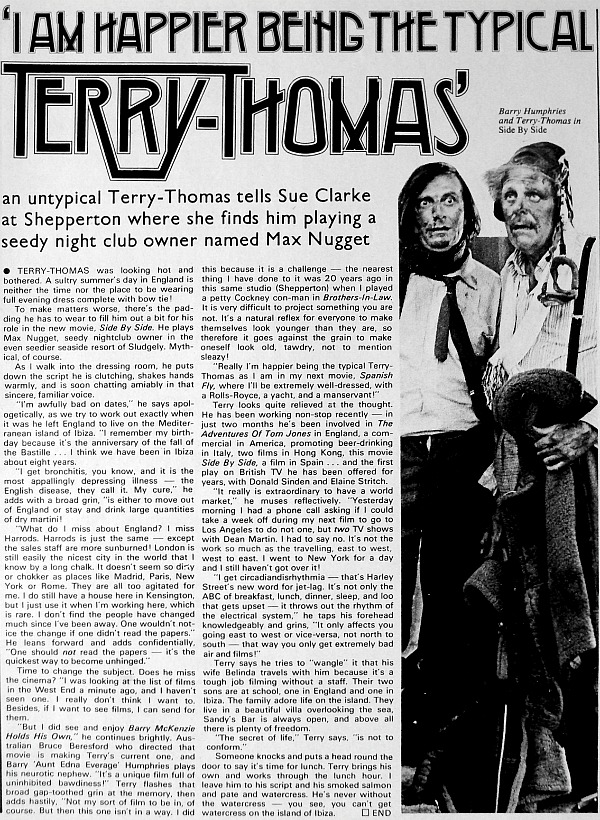|
It’s a Mad, Mad, Mad, Mad World
by Doug Krentzlin
As has been well documented elsewhere, the first draft of the script for It’s a Mad, Mad, Mad, Mad World written by William and Tania Rose (entitled Something a Little Less Serious) took place on the British Isles, either the English or Scottish countryside. Although director Stanley Kramer reset the story in California with an all-star cast of American comedians, it makes an intriguing game of “What If” to imagine that, had the original setting been retained, would audiences have been treated to a cast featuring the likes of Peter Sellers, Spike Milligan, Lionel Jeffries, Peter Cook, Dudley Moore, Norman Wisdom, Benny Hill, Bob Monkhouse, Roy Kinnear, Sid James, Kenneth Williams and Hattie Jacques?
Fortunately, Kramer felt obligated to have at least one token Limey in the cast and he couldn’t have picked a better one: Terry-Thomas, who by 1963 had long supplanted David Niven as Hollywood’s favorite purveyor of the archetype known as the “silly-ass Englishman.” (Terry-Thomas was so popular with American audiences at this time, he was cast in his only romantic lead in Frank Tashlin’s Bachelor Flat.)
As those who haven’t been living off planet for the last half-century will know, the plot of It’s a Mad, Mad, Mad, Mad World concerns a group of strangers who witness a fatal highway accident in the California desert. The sole casualty is a small-time crook named “Smiler” Grogan (Jimmy Durante) who, before he kicks the bucket (literally), spills the beans about $350,000 of stolen loot buried in a state park 200 miles away.
After fruitless attempts to negotiate a way to divvy up the dough fairly, they all decide it’s every man (“including the old bag”) for himself and begin a race to see who reaches the money first. At this point, the film becomes a comedy equivalent of The Treasure of the Sierra Madre as the various characters double-cross and backstab each other in their quest for instant riches. Unbeknownst to them, Capt. C.G. Culpepper (Spencer Tracy) of the Santa Rosita Police Department has everyone under police surveillance hoping to learn the location of the swag.
The Roses and Kramer realized that maintaining the momentum of a two-hour plus car chase would be untenable, so the bulk of the film is structured into subplots built around the types of comic situations typical of the old comedy two-reelers of the 30s and 40s (Sid Caesar and Edie Adams locked in the basement of a hardware store, Buddy Hackett and Mickey Rooney stranded in an airplane they don’t know how to fly, Jonathan Winters in a slapstick melee in a gas station, Phil Silvers lost in the wilderness).
Terry-Thomas’ character, Lt. Col. J. Algernon Hawthorne, becomes entwined in the main subplot involving failed businessman J. Russell Finch (Milton Berle), his long-suffering wife Emeline (vivacious Dorothy Provine) and his Mother-in-Law From Hell, Mrs. Marcus (Ethel Merman). Hawthorne first encounters them on foot hitchhiking in the middle of the desert after their car has been totaled.
Since the roles have all the depth of cartoon characters, the performers had to establish their personas immediately. Terry-Thomas pulls this requirement off beautifully. The lecherous smile and glint in his eyes when he first sees Mrs. Finch (who couldn’t look more fetching in her matching white dress and pumps) instantly establish Hawthorne as a first-rate cad, bounder and scoundrel to boot.
As the Finch family load into Hawthorne’s station wagon, Mrs. Marcus sits on a cactus sample Hawthorne just found in the desert. When she asks what she should do with the cactus, both Finch and Hawthorne exchange glances that say neither of them would touch that straight line with a 10-foot pole. Hawthorne’s main priority, however, is flirting with Emeline. As he explains that his assignment at a local military base is “very hush-hush,” he smarmily adds “hoosh-hoosh” as an icebreaker that gives Emeline a case of the giggles.
Eventually, due to plot complications too convoluted to explain here, Finch and Hawthorne wind up alone speeding down the highway in the station wagon. Tempers flair between the two men and soon the enmity takes the form of perverse national pride.
Hawthorne: I don’t wish to quarrel with you, Finch, but speaking as a representative of Her Majesty’s Armed Forces, I take the most particular…
Finch: You want me to tell you something?
Hawthorne: What?
Finch: You want me to tell you something? As far as I’m concerned, the whole British race is practically finished! If it hadn’t of been for lend lease, if we hadn’t of kept your whole country afloat and given you billions that you didn’t even thank us for, the whole phony outfit would have sunk under the Atlantic years ago! (Hawthorne stops the car) What are you stopping for?
Hawthorne: Get out of this machine!
Finch: Get out? I can’t… you’re crazy…
Hawthorne: It’s my machine and I’ll do what I bloody well please! Out!
Finch: Please… I’m awfully sorry... Y’know, I’ve been very edgy today and, if I said anything about England, I apologize.
Hawthorne (starting car): Glad to hear you say so. I must say if I had the grievous misfortune to be a citizen of this benighted country, I would be most hesitant to offer any criticism whatever of any other!
Finch: Wait a minute! Are you knocking this country? Are you saying something against America?
Hawthorne: Against it? I should be positively astounded to hear there was anything to be said for it! Why, the whole bloody place is the most unspeakable matriarchy in the history of civilization! Look at yourself! And how your wife and her strumpet of a mother push you through the hoop! As far as I can see, American men have been totally emasculated! They’re like slaves! They die like flies from coronary thrombosis while their wives sit under hairdryers eating chocolates and arranging for every second Tuesday to be some sort of Mother’s Day! And this positively infantile preoccupation with bosoms! In all my time in this wretched, God-forsaken country, the one thing that has appalled me most of all is this preposterous preoccupation with bosoms! Don’t you realize they have become the dominant theme in American culture? In literature, in advertising, in all things, in anything, you name it! I’ll wager you anything you like that if American women stopped wearing brassieres, your whole national economy would collapse overnight!
As they enter a tunnel, a single tire emerges first, then the station wagon careens out and flips over. After crawling from the wreck, Finch and Hawthorne engage in the type of fisticuffs that would not be out of place in a Warner Brothers cartoon (Finch and Hawthorne throw roundhouse punches that miss until they lock knuckles, Finch goes flying off a cliff à la Wile E. Coyote as Hawthorne sidesteps his lunge).
And that’s just in the first half of the film before the intermission. (Yes, Virginia, there was a time when exceptionally long movies had intermissions just like stage plays.) In the second half, all the subplots come together and the loose threads are tied up. It hardly qualifies as a spoiler to say that none of the characters end up wealthy at the conclusion of the long, hard day.
In wrapping up, I’d like to call attention to two contributors who have never received the credit they deserve. The first is composer Ernest Gold whose elaborate symphonic score adds immeasurably to the movie’s effectiveness. Like any great film composer, Gold realized that the secret to scoring comedy is to play it straight, so his music emphasizes the emotional excitement and physical action of the story rather than the humor. Indeed, one of the main reasons the various rip-offs of It’s a Mad, Mad, Mad, Mad World failed to match the quality of the original was that their accompanying music was either too damn cute (The Great Race, Those Daring Young Men in Their Jaunty Jalopies, Rat Race) or nonexistent (What’s Up, Doc?).
The second unsung contributor was literally uncredited. The special effects for the spectacular grand finale in which the major characters end up clinging to the top of an out-of-control fire truck ladder that flings them around like a dog shaking off fleas was the final work of stop-action animation wizard Willis O’Brien who achieved cinematic immortality as the creator of King Kong.
Most of Stanley Kramer’s films leaned toward heavy-handed moralizing, but thankfully the only purpose of It’s a Mad, Mad, Mad, Mad World was to amuse and entertain the audience. (Seeing as the film opened just five days before the assassination of US President John F. Kennedy, Lord knows people needed a good chuckle at the time.) As Joel McCrea put it in Preston Sturges’ Sullivan’s Travels: “There's a lot to be said for making people laugh. Did you know that that's all some people have? It isn't much, but it's better than nothing in this cockeyed caravan.” Amen to that, brother.
Doug Krentzlin is a professional freelance writer, guest lecturer and actor living in Silver Spring, Maryland, with his cats, Buffy and Angel. He writes an entertainment blog for Examiner.com (http://www.examiner.com/x-360-Classic-TV-Examiner) and has had articles published in the New York Post and Movie Maker Magazine. Doug can be reached at dkrentzlin@hotmail.com.
|
|
|
Spanish Fly
By 1975 Terry-Thomas was already well into his battle with Parkinson's Disease and the attempt to stave off the devastating effects of the disease. Having been diagnosed as a sufferer in the early 1970's Terry had made the decision not to go public with his condition.
As long as he felt fit and was able to mask the physical effects of his condition he wanted to keep on working for as long as he possibly could. He was a very proud, fastidious man - a perfectionist and he simply did not wish to announce to the world the details of his condition.
In 1975 he was offered a role in a low-budget comedy called Spanish Fly. Best described as a semi-soft porn comedy romp it seated itself somewhere between the latter Carry-On films (slightly more risque and infinitely cruder) and the newer breed of pseudo-Carry On films such as Confessions Of A Window Cleaner and The Adventures Of A Taxi-Driver.
Terry was accutely aware of the decline in the standards of the scripts and types of films he was being offered. At the same time he also recognised that this was a new era in film-making and that the heady and glorious days of the 50's & 60's and the gentler, more subtle comedies of old were long gone.
Terry signed on to play Sir Percy de Courcy and the character was very much in the mould of his earlier screen incarnations. The film was to be shot in and around the Balearic islands. Leslie Philips. Terry's contemporary and another great screen comic actor, who had carved out his own niche in the British film industry, was also signed on for the film. Such was the interest in this on-screen pairing that the film itself proclaimed the billing as 'Terry-Thomas versus Leslie Phillips'.
The film was directed by Bob Kellet who recalled that, despite his ill-health, Terry still managed to deliver a wonderful performance. "He was his usual immaculate self, and wanted everything to be absolutely right."
Leslie Phillips, unaware of Terry's condition, noticed that something was amiss. "I made a film with him in the Seventies in Menorca, called Spanish Fly, and I realised then there was something wrong with him. I'd see him come in in the morning looking dreadful, and get into make-up, and come on set looking fantastic - so smooth, smoother than me, really, except for the gap between his teeth - and he'd struggle for the words, because his memory was suspect. And then I realised there was something wrong with him".
Despite his illness and his reported trouble with lines and numerous retakes, none of this shows on-screen. Terry is the loveable, likeable rotter and plays the role with relish. Sadly the film was not a great success with the public and found even less favour with the critics.
Below: Terry in selected scenes from Spanish Fly (1975)
|
|
|
Terry-Thomas Photoplay Feature - 1975
The following article, promoting Terry's film Side By Side, comes from a 1975 edition of the popular Photoplay movie magazine.
|
